The Air Canada Annual Worldwide Companion Pass is granted upon meeting a certain spending threshold on the premium Aeroplan credit cards.
In this article, let’s take a look at how the Annual Worldwide Companion Pass works and how to redeem it for maximum value along your travels.
In This Post
- Annual Worldwide Companion Pass: The Rules
- Which Credit Cards Offer the Annual Worldwide Companion Pass?
- Maximizing the Annual Worldwide Companion Pass
- Travel in Peak Season or Last-Minute
- Which Region Is the Best Value?
- Book Higher Fare Categories
- Use eUpgrades for Premium Economy or Business Class
- What’s the Value of the Annual Worldwide Companion Pass?
- Conclusion
Annual Worldwide Companion Pass: The Rules
In this article, we’ll refer to the Annual Worldwide Companion Pass as simply the “Companion Pass” for short.
The Companion Pass allows a second passenger to travel on a discounted base fare when the first passenger pays full price for an Air Canada economy class ticket to anywhere in the world.
The following rules govern its use:
- It can be redeemed on any Air Canada itinerary between Canada or the United States and one of the following destination regions:
- Canada or the United States (excluding Hawaii): $99 (all figures in CAD) base fare
- Hawaii, Mexico, Central America, and the Caribbean: $299 base fare
- South America, Europe, Middle East, and Africa: $499 base fare
- Asia, Australia, and New Zealand: $599 base fare
- It can be redeemed on one-way or round-trip flights (although there is no residual value if used on a one-way flight).
- It can be redeemed on an Economy Standard, Flex, Comfort, or Latitude fare.
- It must be redeemed on flights marketed and operated by Air Canada only, and cannot be used on codeshare flights or itineraries involving partner airlines.
- It must be redeemed on revenue fares only, and cannot be used in conjunction with an Aeroplan award.
- There are no blackout dates or other usage restrictions; the Companion Pass can be redeemed on any Air Canada flights on any date of the year.
- It will be deposited into your Aeroplan account up to 10 weeks after your cardholder renewal date (more on this below), and it will have a one-year validity period from that date.
- During the validity period, the Companion Pass can be used to book flights over the upcoming one-year period, meaning that a Companion Pass can effectively be used to book travel within a two-year period from the day it’s earned.

The Annual Worldwide Companion Pass must be redeemed in its original form for a set of Air Canada flights with at least two passengers on the booking within the validity period, or you’ll lose it.
Which Credit Cards Offer the Annual Worldwide Companion Pass?
The Companion Pass is offered as a threshold benefit upon spending $25,000 in a membership year on one of the four Aeroplan premium credit cards:†
- TD® Aeroplan® Visa Infinite Privilege* Card
- CIBC Aeroplan® Visa Infinite Privilege* Card
- American Express Aeroplan Reserve Card
- American Express Aeroplan Business Reserve Card
| Credit Card | Best Offer | Value | |
|---|---|---|---|
|
Up to 95,000 Aeroplan points
$599 annual fee
|
Up to 95,000 Aeroplan points | $1,147 | Apply Now |
|
Up to 85,000 Aeroplan points†
$599 annual fee
|
Up to 85,000 Aeroplan points† | $871 | Apply Now |
|
85,000 Aeroplan points
$599 annual fee
|
85,000 Aeroplan points | $858 | Apply Now |
|
100,000 Aeroplan points
$599 annual fee
|
100,000 Aeroplan points | $582 | Apply Now |
As noted above, the Companion Pass gets deposited into your Aeroplan account “up to 10 weeks following the card account year”,† which means that you may need to pay a second year’s annual fee before receiving the Companion Pass in the “Benefits” section of your Aeroplan account.
However, there have been reports from some Aeroplan premium cardholders who have had the Companion Pass deposited into their accounts soon after they reach the $25,000 spending threshold.
Among the three issuers, American Express is the only one that provides a progress tracker in the monthly statements for your $25,000 spending threshold. With the cards issued by TD and CIBC, you’ll have to keep track on your own.

Maximizing the Annual Worldwide Companion Pass
The logic behind maximizing the Annual Worldwide Companion Pass is the same as any other companion voucher-style product: the more the first passenger pays, the more savings the second passenger gets.
The value proposition increases proportionally to your willingness to spend. From a user’s perspective, these types of offerings can be very useful if you’re willing or required to spend a fair bit of cash on flights in the first place.
On the other hand, the upside is more limited if you’re looking to minimize your out-of-pocket spending and get as much as you can for “free”.
That’s especially because you’re still on the hook for taxes, fees, and fuel surcharges that may comprise a significant chunk of an economy ticket.
Still, if you’ve earned a Companion Pass, you may as well give some thought as to how to extract maximum value from it rather than letting it expire unused. Let’s take a look at some of your options.
Travel in Peak Season or Last-Minute
When travelling during off-season, fares will often be cheap enough that redeeming the Companion Pass makes very little sense.
For example, consider this off-season, round-trip fare from Toronto to Dublin, whose base fare is $315 on Economy (Standard). In this case, you’d be wasting your Companion Pass because the base fare of $315 is lower than the $499 flat-rate base fare you’re supposed to pay.
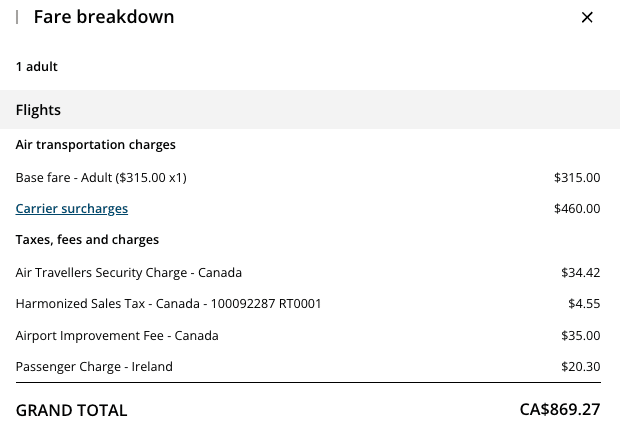
In other words, you’d actually wind up paying more by using a Companion Pass in this example.
On the other hand, fares tend to skyrocket if you’re travelling during peak season or on a last-minute basis. Again, the more the first passenger pays, the more the second passenger saves.
While you’d never choose to pay more than you need to, if you simply must travel (as tends to be the case for those who do travel during peak season or who embark on last-minute trips), the Companion Pass could save you a good chunk on the second passenger’s fare.
Take, for example, a teacher who plans vacations around the school year. If they want to maximize their time away, they’d often end up paying very high cash fares.
In the example below, a round-trip base fare from Toronto to Mexico City during the winter holidays is $1,405, but the second passenger would pay only $299 plus taxes and surcharges with a Companion Pass, thus saving the household $1,106.
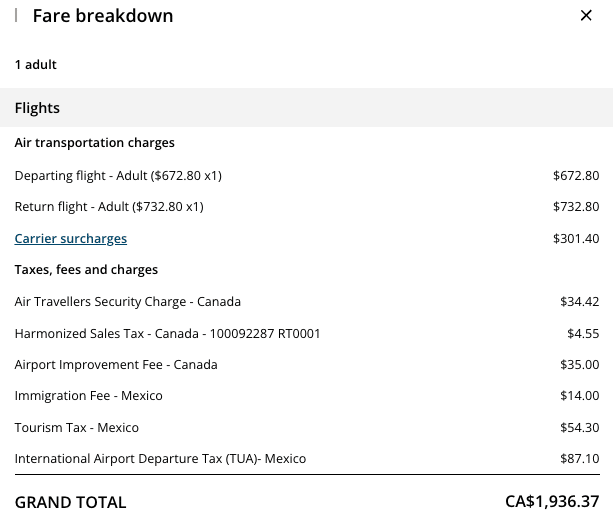
Or consider a Toronto-based couple who needs to travel to Amsterdam this coming weekend for a family emergency. Since only Economy (Flex) fares are available, the round-trip base fare is $1,485.
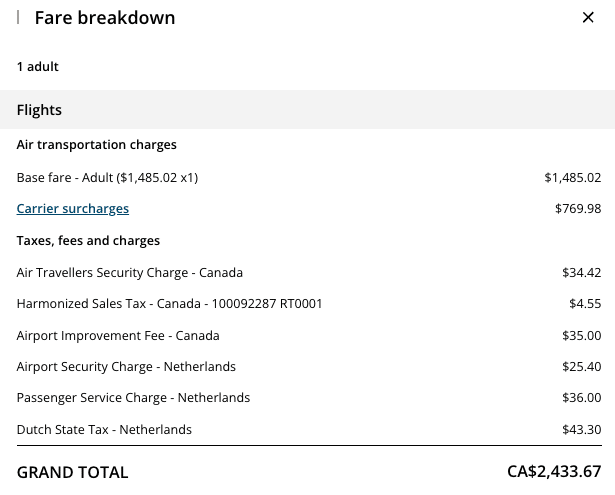
Applying the Companion Pass, the second passenger would only pay $499 plus taxes and surcharges, saving $986 on this unexpected expense.
Indeed, if you don’t have any better uses for your Companion Pass, then keeping it around for some big savings in case of unexpected last-minute trips can be a solid backup strategy.
Which Region Is the Best Value?
You’ll notice that different parts of the world come with different base fares under the Companion Pass.
We can ask the question of which region might be most valuable for redeeming the Companion Pass by taking a rough estimate of Air Canada fares around the world and comparing them to the discounted base fares.
First off, for Canada and the US, you can easily find something that would exceed the $99 round-trip base fare of the Companion Pass, especially for longer, transcontinental flights.
For example, a round-trip base fare for a transcontinental Toronto–Los Angeles flight is typically around $200–300.
But often, especially for competitive routes served by ultra-low-cost carriers, the round-trip base fare ends up being too low for a Companion Pass to result to substantial savings.
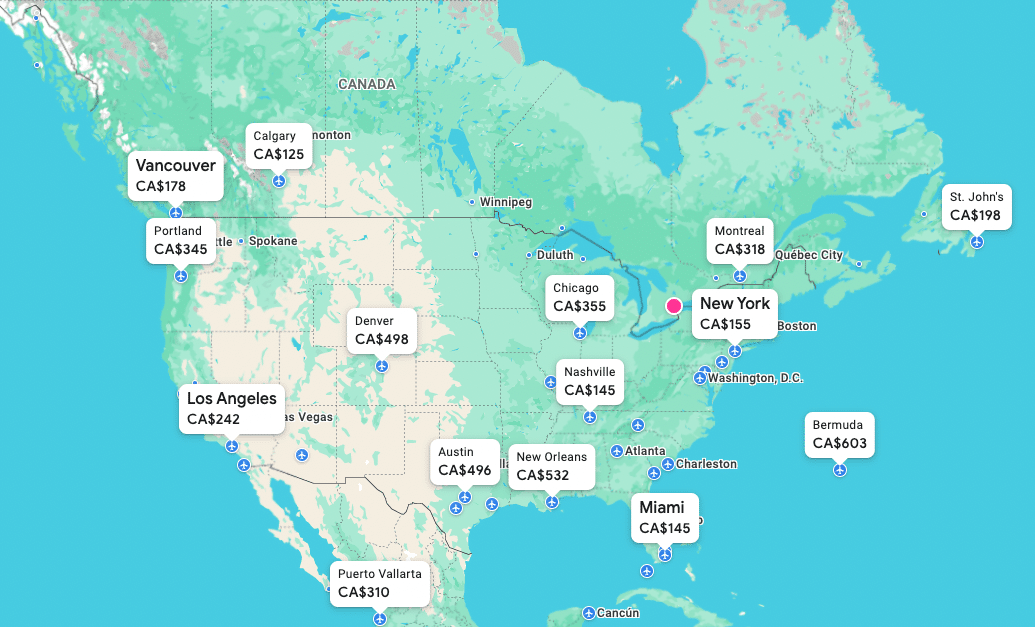
For Central America and the Caribbean, Air Canada’s round-trip base fares from its major hubs tend to fall in the vicinity of $400–700 during non-peak times.
Compared to a discounted base fare of $299, your savings might land in the region of $100–400. That’s not insignificant, but the savings might be more meaningful with long-haul flights.

Looking at South America, Europe, the Middle East, and Africa, base fares to these regions tend to price out at around $900–1,100 during non-peak times.
Compared to a discounted base fare of $499 (CAD), you’d save about $400–600 depending on the exact flight.
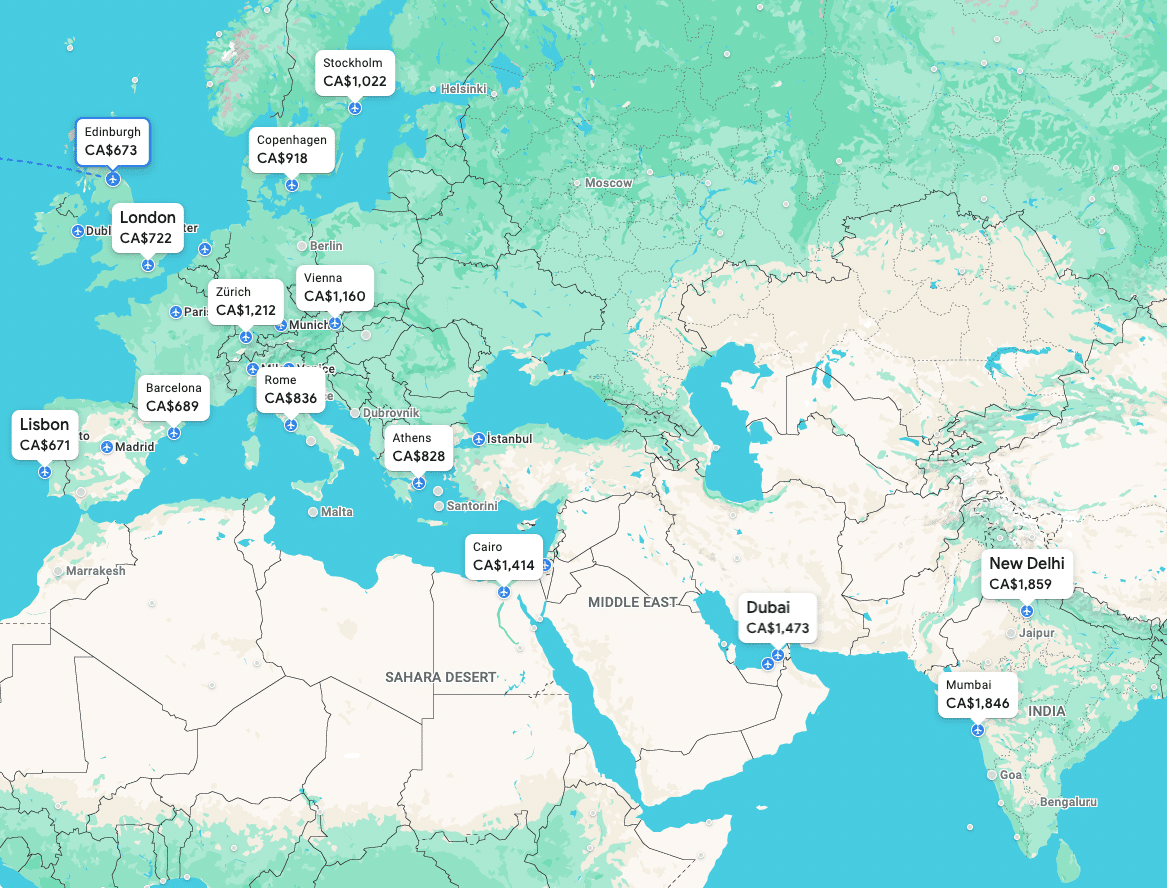
Finally, with the sheer size of Asia, Australia, and New Zealand, there tends to be much greater variance in terms of the average fares to different destinations.
Vancouver–Seoul can be booked for as little as $1,000 all-in, meaning that your $599 discounted base fare wouldn’t be discounted by all that much.
Meanwhile, Toronto–Delhi regularly sells for $1,500–1,900 round-trip, making it an excellent use of the Companion Pass that can unlock $1,000+ in value without even applying any of the more advanced strategies.
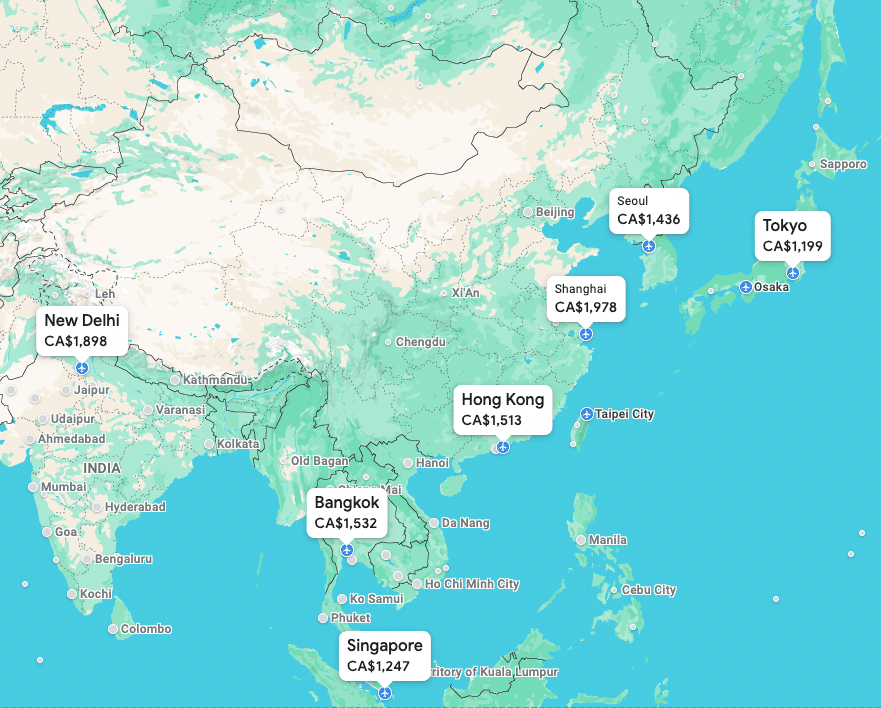
On paper, the Asia, Australia, and New Zealand region unlocks the greatest value for the Annual Worldwide Companion Pass, even though its base fare is the highest – and that’s very much in keeping with the nature of the product itself.
Book Higher Fare Categories
With the above exercise, we’ve taken into account the cheapest fare categories in economy class to each destination.
However, since the Companion Pass can be redeemed for any economy class flight, it would fetch higher value if you’re in the habit of booking Economy (Flex) or Economy (Comfort) fares – perhaps for Aeroplan Elite Status considerations.
After all, Economy (Flex), Economy (Comfort), and Economy (Latitude) fares earn significantly more Status Qualifying Miles (SQM) and Status Qualifying Segments (SQS) compared to Economy (Basic) and Economy (Standard) fares (100%+ of the distance flown vs. 25% or 50%).

If, say, both you and your spouse are looking to climb the status ranks, a Companion Pass can help you save a good chunk on the Economy (Flex) or higher fares, reducing the out-of-pocket spend required to earn status.
Even if you’re a solo flyer who books Economy (Flex) fares or higher for status purposes, you could team up with a fellow Aeroplan Elite Status member on an end-of-year mileage run to Europe or Asia, while splitting the savings that you get from the Companion Pass.
However, keep in mind that these strategies would be most useful if you’re pursuing SQM/SQS more than Status Qualifying Dollars (SQD), since the Companion Pass will naturally reduce the SQD earned by the second passenger.
Use eUpgrades for Premium Economy or Business Class
That brings us to the final way to boost your value from the Companion Pass: use the voucher to book two Economy (Latitude) fares at a heavily discounted rate for the second passenger, and then apply Air Canada eUpgrades to fly in premium economy or business class instead.
Consider a couple who wants to fly business class from Montreal to London. The cheapest business class fare clocks in at $6,384 round-trip, so it would be $12,768 (CAD) for two passengers.
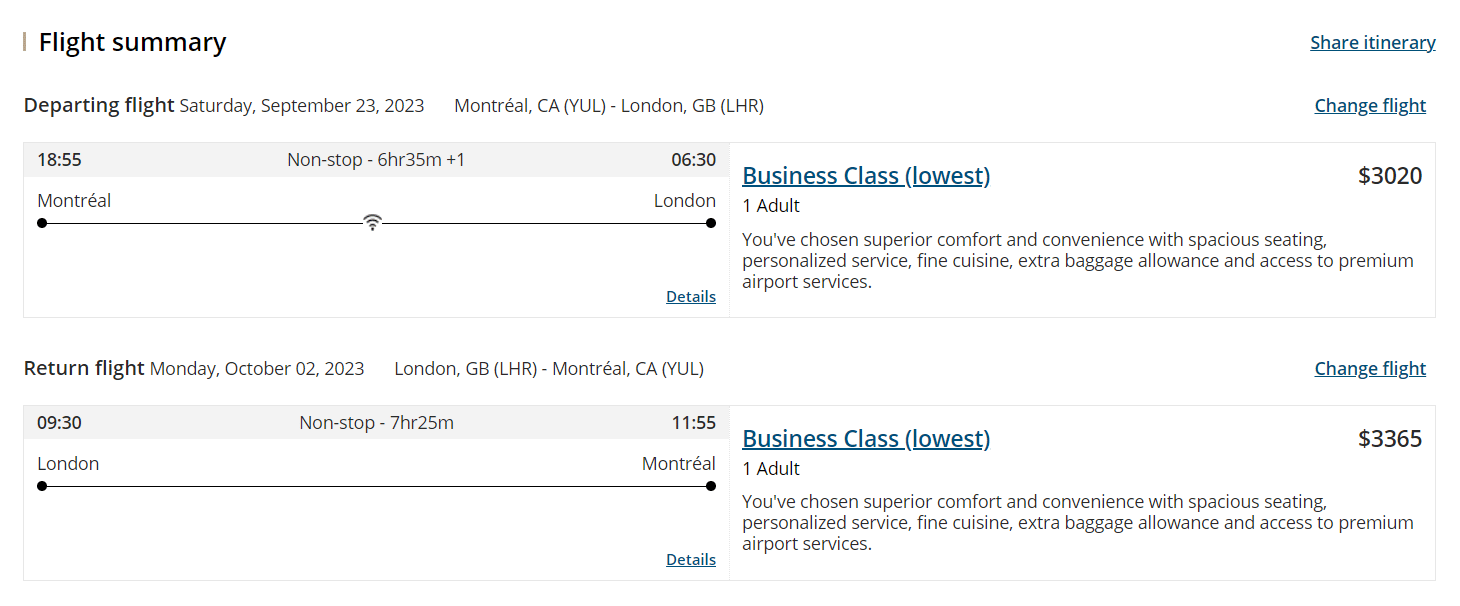
Let’s imagine both travellers have earned Aeroplan 25K status, and therefore hold 25 eUpgrade credits in each of their accounts.
That gives them enough eUpgrades to confirm an instant upgrade from Economy (Latitude) to business class on both legs of their journey (assuming there’s eUpgrade availability on both flights), which would cost 11 eUpgrade credits per person per direction based on the eUpgrades chart.
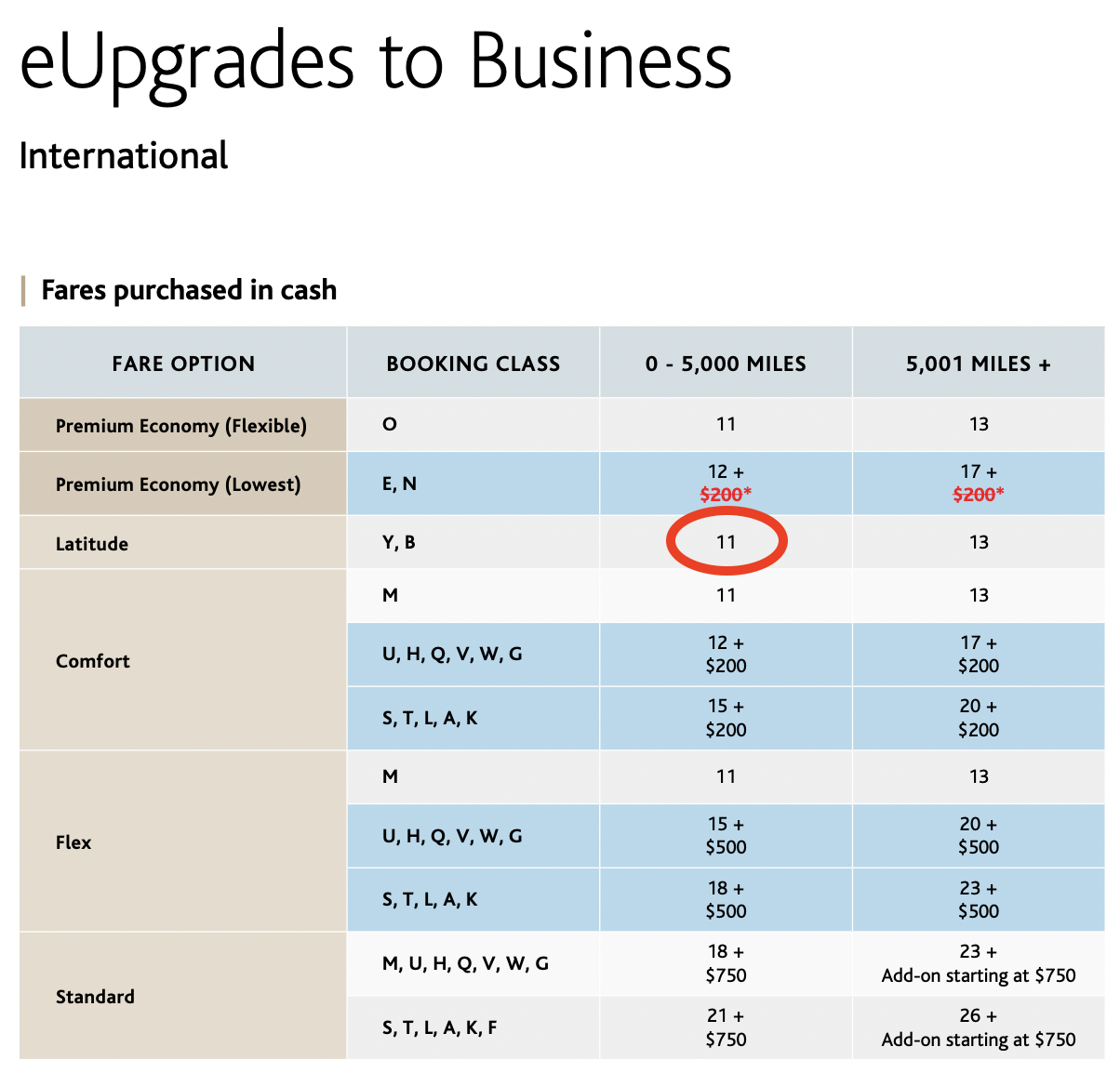
The Economy (Latitude) fare is $3,730. When applying the Companion Pass, the first passenger would pay this fare in full, whereas the second passenger would pay a $499 discounted base fare plus $909 in taxes and fees.
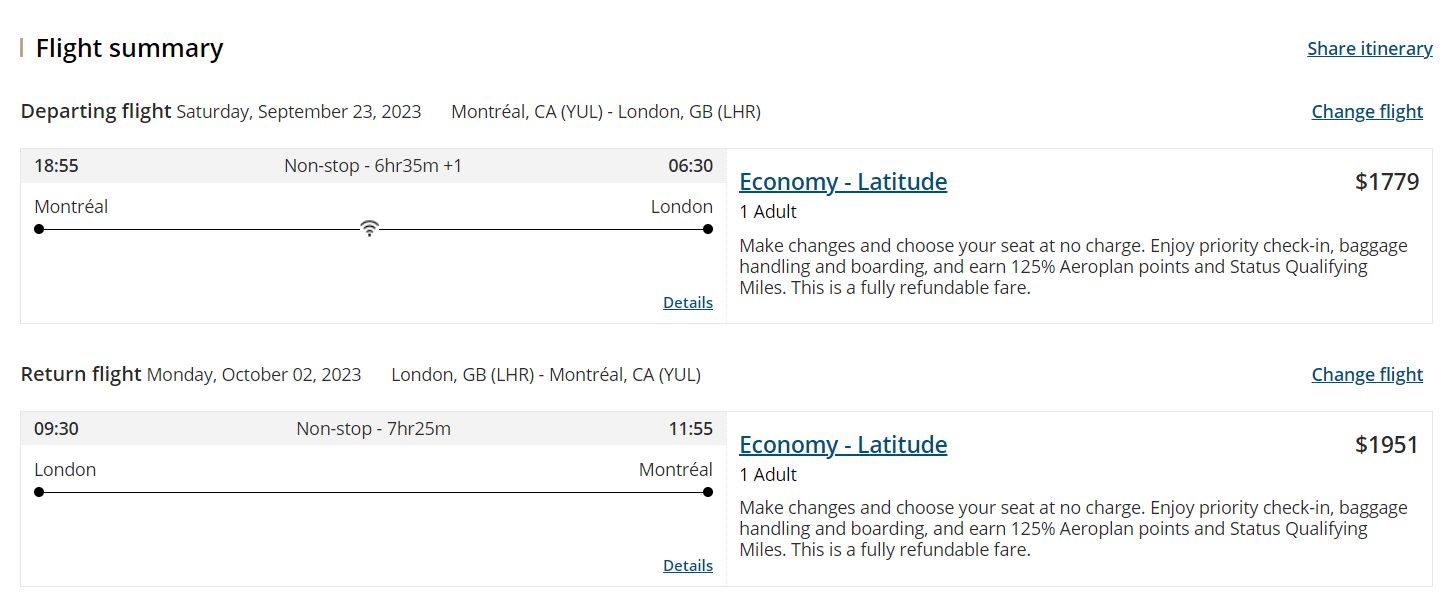
The total all-in pricing for both passengers is $3,730 + $499 + $909 = $5,138, allowing them to save a whopping $7,630 on their round-trip business class flights.
Again, we’re back to the central principle: the Companion Pass will be a lot more useful for those who are willing to spend some cash in pursuit of elevated travel, rather than those who are looking to keep their expenses to a bare minimum.
What’s the Value of the Annual Worldwide Companion Pass?
With the above in mind, can we pin down a valuation for the Annual Worldwide Companion Pass? On average, across all use cases, how much is this benefit worth?
While it’s always a fun thought exercise to nail down a specific valuation, it’s a much more meaningful to consider two valuations depending on the type of traveller: those who wouldn’t be averse to paying a few thousand dollars for the comfort and convenience of Air Canada business class flights, and those who’d scoff at the idea and gladly fly in economy instead.
In the former case, the possibility of applying eUpgrades to an Economy (Latitude) booking can unlock significant value as outlined above.
Given the dollar savings against purchasing a business class fare directly, as well as the flexibility to save Aeroplan points for future trips by using a Companion Pass to outperform a “Latitude Attitude” points booking, it’s fair to peg the fair value of the Companion Pass at a minimum of $1,000 (CAD).
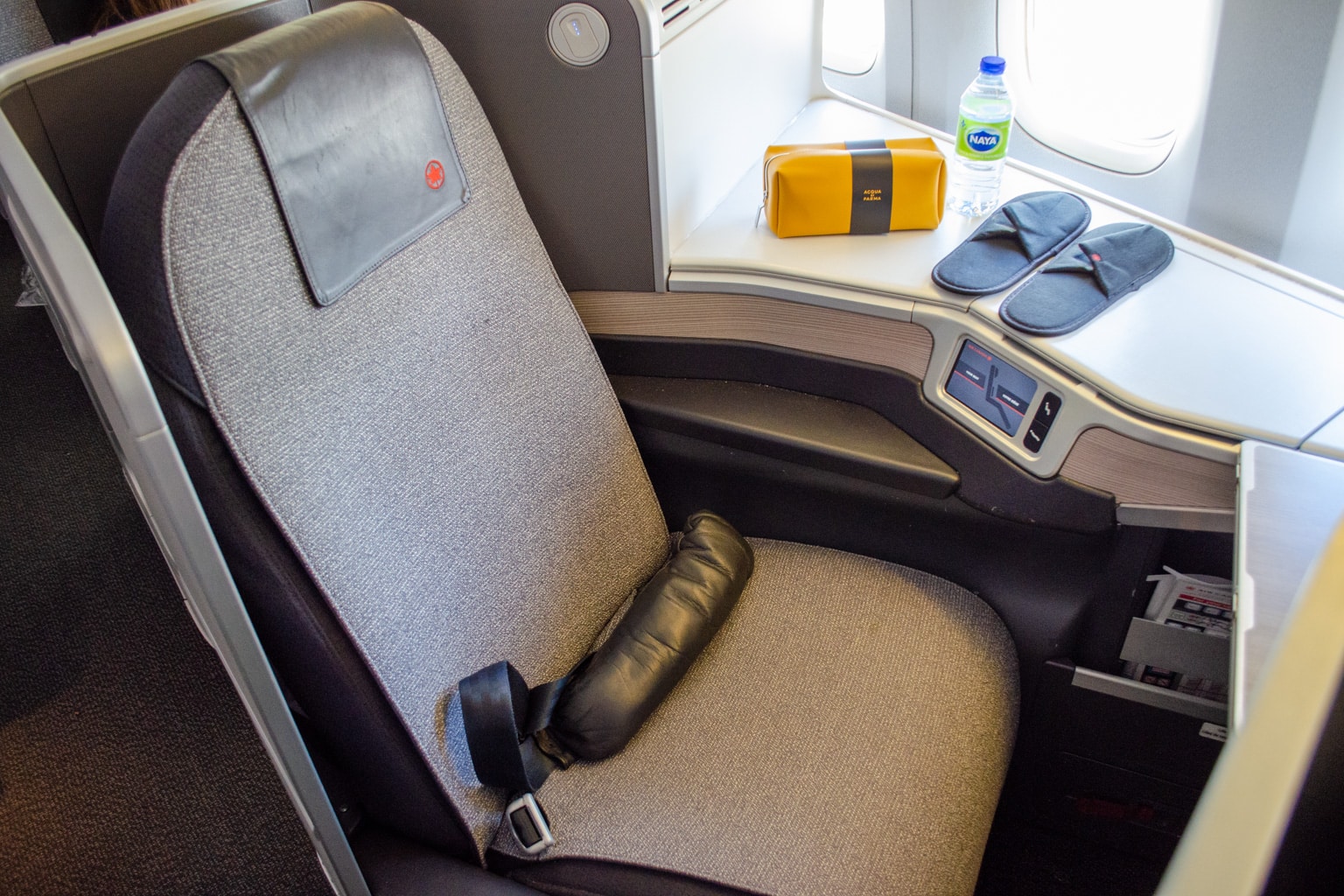
For the latter type of traveller, the thought of parting ways with a few grand in cash for business class flights just doesn’t sit right. They’d rather follow a defined strategy of using points for business class and paying cash for economy.
In this case, a fair value for the Companion Pass might fall somewhere in the region of $500 (CAD). As we saw, any long-haul flight outside of North America can realistically unlock this valuation, while flights to Air Canada’s most distant destinations can easily achieve higher value.
With these two valuations in mind, we’re looking at a rough Return on Spend of either 4% or 2% on the $25,000 spending needed to earn the Companion Pass in the first place.
If you’re the type of traveller who isn’t averse to paying for a business class flight here and there, and who engages with Aeroplan enough to earn eUpgrades through elite status, you’ll get much more out of the Companion Pass than someone who’s purely treating it as an incremental benefit.
And since this is a threshold reward on the premium Aeroplan credit cards after all, that’s probably the way the Companion Pass was intended to be.
Conclusion
The Air Canada Annual Worldwide Companion Pass provides another avenue towards expanding your travel possibilities, allowing you to book a second passenger for a fixed based fare when you pay full price for the first passenger.
In general, the more you spend on Air Canada cash fares, the more benefit you’ll get out of the Annual Worldwide Companion Pass. If you have eUpgrades at your disposal, you can also use it to unlock a pathway towards discounted business class tickets as a duo.
The benefit is cleverly designed to reward high-end travellers and Aeroplan Elite Status members with the greatest value, and in that respect, it’s very much a fitting spend-based perk on the premium Aeroplan credit cards.
† Terms and conditions apply. Please refer to the card issuer’s website for up-to-date information.







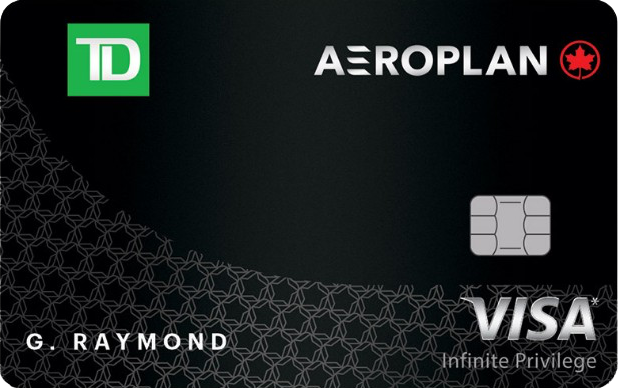

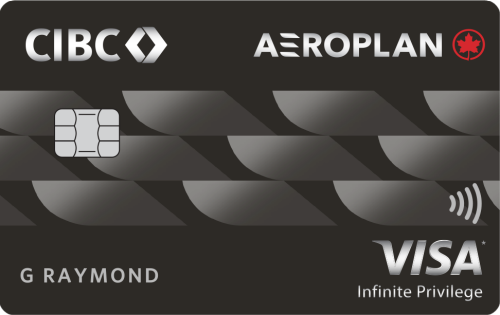









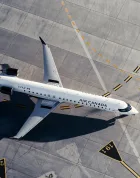


Great Article Ricky! Mostly validated my current use if AC-CP for Status + Latitude/Attitude. QUESTION? I have VISA Infinite Privilege but considering adding AMEX Aeroplan Reserve. Does anybody have both & receive 2 x Companion Passes or does AC/Aeroplan given anybody grief over the double up?
You also should factor in the hefty annual fee of about $599 , to see if it makes sense to keep card just to get companion pass deposited. By the time you factor in the annual fee and base fares, its kinda not worth it.
Guessing you can’t combine the companion pass along with paying with points on a flight?
For the Amex Aeroplan Reserve, do you have any data points on if you spend the $25K earlier you receive the Annual Companion Pass earlier (i.e. 8-10 weeks after you hit the $25K threshold vs. 8-10 weeks after the card anniversary date, which may be much longer)?
I have a TD infinite privilege card and am a 35K member and can’t seem to find ANY flights that could apply for my companion pass on Air Canada’s web site… tried different dates, different destinations… anyone else having a hard time being able to redeem this benefit? Thanks
Can you earn 2 passes for $50k spend or 3 for $75k etc?
Nope, one per card per year.
I may have missed this, but if your Pass is close to the expiry date, can you book a flight with it that would occur past that expiry date?
For example – Airfare for 2 to LHR. Expiry Date would be August 31st, 2021, but we’d like to travel in October 2022.
Booking must be made before the Companion Pass expiry date; travel may occur after the Companion Pass expiry date subject to flight schedule availability at the time of booking.
From: https://www.aircanada.com/ca/en/aco/home/aeroplan/credit-cards/companion-pass.html
Thank you!
Great review of this benefit – thank you.
As regards the Progress Tracker for the CIBC card, I use the “CIBC CreditSmart Spend Report – Year to Date” as my calculator since it is a new card this year.
Based on your analysis, I will keep the Companion Pass on hand for emergency/last minute travel when it loads into my account.
I appreciate the Latitude Attitude reminder in your article to extract max value from a benefit that in my mind was geared only towards Economy Class travel. Now I see the benefit in a new light. And if I’m in the E-Upgrade window for booking this last minute flight, maybe I can even book in a lower fare class and still get instant upgrade confirmation.
That’s a great shout Richard!
Keep in mind that if you’re already spending $10k for the status promo, it’s only $15k more which yields a slightly higher return on spending.
The T&C for annual companion pass states…
“The pass may not be used with premium cabin fares, or in conjunction with Aeroplan flight rewards, Flight Pass, group travel bookings, Air Canada Vacations bookings, or any other discounts or promotion codes.”
Applying eUpgrade is not considered as Aeroplan flight rewards? If so, then can we upgrade the companion ticket with points (to business) instead of using eUpgrade?
Does the companion pass cover Carrier Surcharges? (e.g. the london itinerary posted in the “Travel in Peak Season or Last-Minute” section has a carrier surcharge of $450 as part of the Air transportation charges & not the taxes).
I’ve read the T&Cs but they state: “The Companion Pass entitles a companion to accompany the primary cardholder for a fixed base fare (plus taxes, fees, charges, and surcharges)…”
Bit of a head-scratcher that one.
Just got my companion pass. That carrier surcharge is not covered under the pass so the pass is greatly devalued in my eyes.